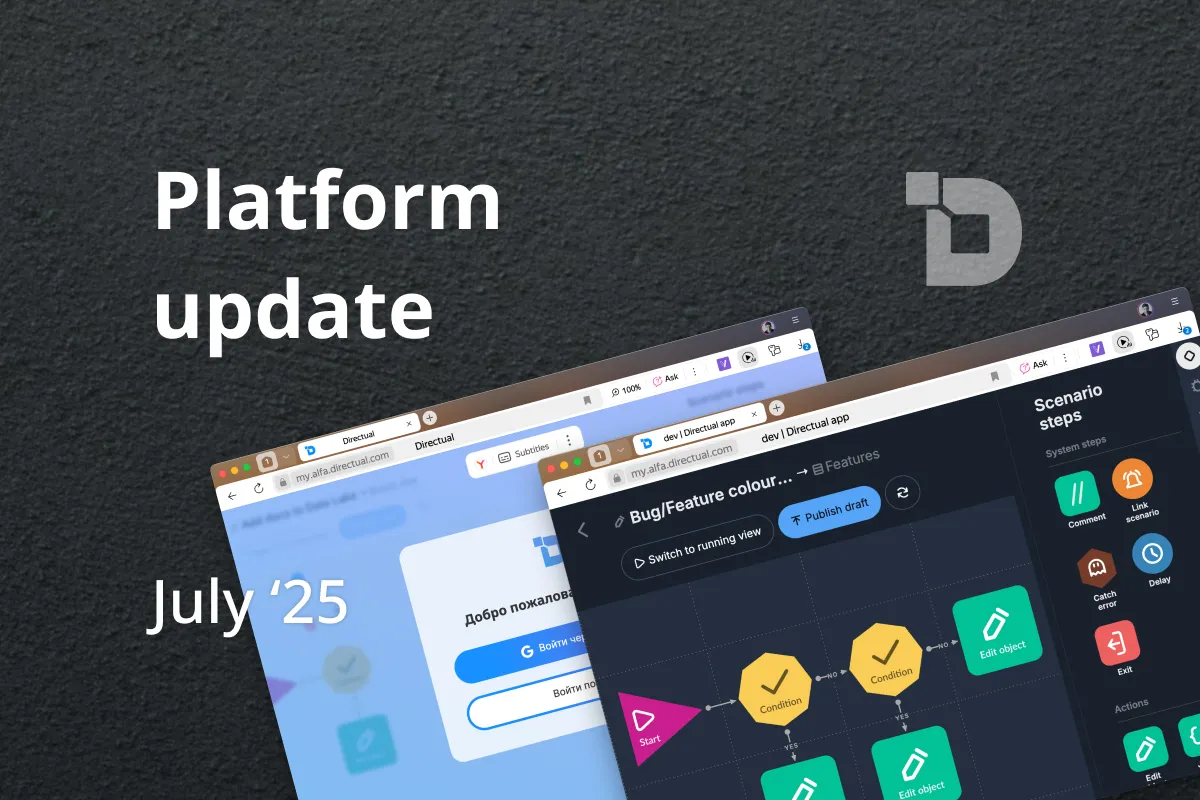If you asked me to build a rocket ship from scratch, I wouldn't know where to start. But give me a Lego set with instructions, and suddenly I can create a masterpiece without any real skill.
Low-code and no-code tools are basically the idiot-proof version of coding. Instead of building a program from the ground up, these tools do most of the heavy lifting for you. That’s how you can create complex applications even if you don't know the difference between a variable and a function (but you will!)
It's important to understand the difference between low-code and no-code, especially if you're a coding novice who's more likely to crash and burn than launch a successful app. Choosing the right platform will save you from a massive headache down the line. Here's our guide to that for 2024-2025, to refresh your memory if you’ve read something like this before.
What is low-code?
Low-code development still requires some coding skills, but it's a hell of a lot easier than full-code development. With low-code, developers can slap together applications faster using APIs, drag-and-drop features, code templates, process flows, and other tools that don't require much actual coding. This means businesses can pump out new processes and app features way quicker than if they were to code everything from scratch.
Some low-code platforms even come with AI that makes the job even easier. A good AI tool can suggest code snippets, predict your next steps, and help you catch mistakes before they screw everything up.
Pros of low-code development:
- More customizable than no-code
- Faster to build than full-code
- Easier to maintain than full-code
Cons of low-code development:
- You still need to know some coding basics
- Less control for admins compared to full-code
- Usually costs more than no-code
Examples of low-code platforms
- Kissflow. Low-code platform for automating processes. Use it to create workflows, forms, and reports to make your business run smoother.
- Appian Enterprise-grade low-code app builder. Build complex apps fast for stuff like case management, BPM, and workflow automation
- Appsmith. Low-code platform made for developers. Might be too hard for non-techies and may need at least one IT person to handle it. Build custom apps, forms, and workflows, and use the built-in JavaScript editor to write code and even generate JS code with AI.
- Power Apps. Microsoft's low-code platform. Works well with other Microsoft products. Use it to build custom apps, forms, workflows, and integrate with different data sources.
- Zoho Creator. Drag-and-drop app builder for making workflows, forms, and databases. Pretty simple.
- Budibase. Open source platform, so you can use most of it for free if you host it yourself. Create data sources, link to existing ones, set up automation triggers and actions, and customize the design and settings to match your processes.
What is no-code?
No-code platforms let people with zero coding skills build software and websites. It means anyone in your company can create apps that work with what you already have, no technical know-how needed. Like low-code tools, no-code tools have stuff like drag-and-drop, process flows, and other visual tools.
Here's the deal: low-code platforms let you do a lot with just a bit of coding knowledge. No-code cuts out the coding part completely to make building stuff a breeze for non-techies. No-code development is a good choice for businesses because it's flexible and easy to use— even Dave from Accounting can jump in and start making things.
Pros of no-code development:
- Fastest way to build and create
- Cheapest option
- Easiest to maintain
Cons of no-code development:
- Not as customizable as full-code
- Less control for admins compared to full-code
- You're stuck with whatever the no-code platform offers
Examples of no-code platforms
- Directual. No-code automation platform. Build fully automated systems, forms, landing pages, dApps, AI-enabled apps, and store data in an automated database. No coding required.
- Bubble. No-code app builder for creating web and mobile apps visually. Customize elements and data workflows to build complex apps without coding. We did a comparison on it!
- Webflow. No-code website builder. Create responsive websites with advanced design and hosting options.
- Airtable. No-code database for creating custom, collaborative apps. Flexible solution for improving workplace workflows.
- Softr. Powerful no-code platform for building custom web applications. Intuitive drag-and-drop interface for creating websites, internal tools, and online stores quickly.
- Glide. No-code app builder specializing in mobile-friendly apps. Comes with templates and customization options. Easily connect your data and create apps that fit your needs.
Low-code vs. no-code
The main difference between low-code and no-code platforms is how much coding know-how you need. Low-code needs you to have a basic grasp of coding, so even someone who fooled around with software development for a bit could probably use it. No-code means anyone, even without a clue about coding, can jump in and start using it.
Both low-code and no-code platforms have a visual interface and pre-made components that cut down on the need for pricey coding. They automatically generate code to speed things up, so you can make custom apps quickly without needing much (or any) coding skills.
For example, just to get started with a low-code tool, you might need to use a command-line interface. If you've never used one or don't know how to troubleshoot it, tough luck. Once you're in, you can pick from task and interface templates, but you'll still need some coding knowledge to build apps and fix things when they break (and they will).
With a no-code tool, you literally don't need to know anything about coding. Just pick the pre-built parts and customize stuff in the visual interface, and you're good to go.
Benefits of using low-code and no-code tools
The biggest advantage of these tools is obvious: they make development easier. Here's what that means for your company:
- Low-code/no-code tools speed up app development. Even if you're not great at coding, you can use a no-code drag-and-drop tool to quickly create something like a customer registration portal and save weeks of development time.
- These platforms reduce the need for expensive coders and cut development costs. Using these tools isn't always free, but it's usually cheaper than hiring developers.
- Low-code and no-code platforms make app development accessible to non-coders, which can help drive innovation across different teams. HR could create an employee onboarding system on their own without bothering IT.
- Low-code tools let you customize user interfaces, integrate with external systems through APIs, create custom data models, and set up workflows.
- Low-code and no-code platforms allow fast iterations and updates, so teams can be agile and adaptable. No more waiting on dev tickets for simple changes.
- These tools can automate repetitive tasks, freeing up your time for more important things. They often have built-in APIs and workflow automation tools that make setting up automation easy, without needing to code.
With no-code and low-code tools, sometimes you need to go full-code, usually when things are complex or need a lot of customization—unless the platform you’re using is powerful enough to tackle that on its own.
When to choose low-code/no-code vs. full-code
- No-code/low-code is cheaper. One tool can do a lot, so you get a better ROI. Code is more expensive and usually needs multiple developers to build, update, and maintain
- No-code/low-code is fast, often done in hours or minutes. Code takes way longer without pre-written code.
- With no-code/low-code, you get the security of an established service. With code, you can build your own security, but it's complicated to code.
- No-code/low-code makes it easy to make changes as your company grows, with little to no coding needed. Code needs developers to update it for every change, which can take a lot of time and effort.
- No-code/low-code has plenty of customization, but it's limited by the platform. With code, you have complete customization, since you're coding everything manually.
- No-code/low-code often has AI built-in for things like code generation, predictive analytics, and natural language processing. With code, AI can be integrated, but it usually requires more manual work and custom development.
No-code vs. low-code: Tips to get you started
No-code may be for beginners, but that doesn't mean you can't use some basic tips to get started. Here's what you need to do:
- Stop wasting time and join forums, participate in discussions, and learn from people who know what they're doing. Read tutorials, tips, and practical advice to overcome challenges and get started. Subscribe to no-code and low-code newsletters. Join the r/nocode subreddit or the low-code DEV community. Just do it.
- Use templates and pre-built elements from no-code and low-code platforms to speed up development. Directual has tons; grab and do something cool with it.
- Experiment with features, explore the platform, and build simple workflows until you understand how it works.
- No-code and low-code platforms are great, but don't be stupid. Establish governance, risk management, and compliance protocols to keep your apps secure and maintain integrity. Define roles and responsibilities, implement data protection measures, and follow industry standards. It's important.
- Don't just pick any provider. Consider features, scalability, pricing, and support. Research different providers, explore their products, and test them out to see if they'll work for you. Make an informed decision. And then go for Directual, hehe.
Afterword
Low-code and no-code approaches save you money and time. If you're a business trying to streamline development and processes, it's a no-brainer.
Low-code and no-code platforms aren't going to replace expert coders and traditional developers completely. But they allow businesses to scale in ways that weren't possible before. They're a powerful tool for the future, and you'd be foolish not to take advantage of them. Try no-code first and see if it works. If it does, don't waste your resources on a full-code solution until you're absolutely sure you need it.
Want to ask us how to get started? Head over to our communities, the links are in the footer below.
















































